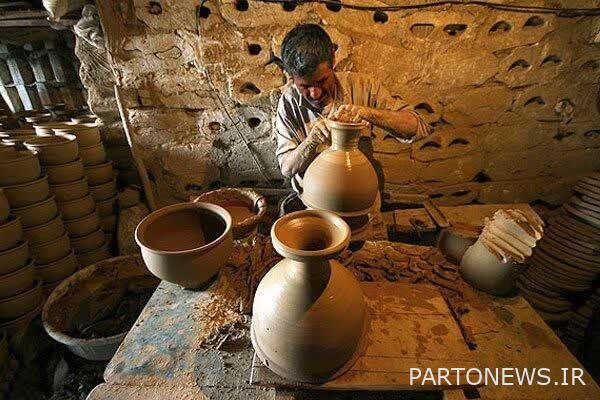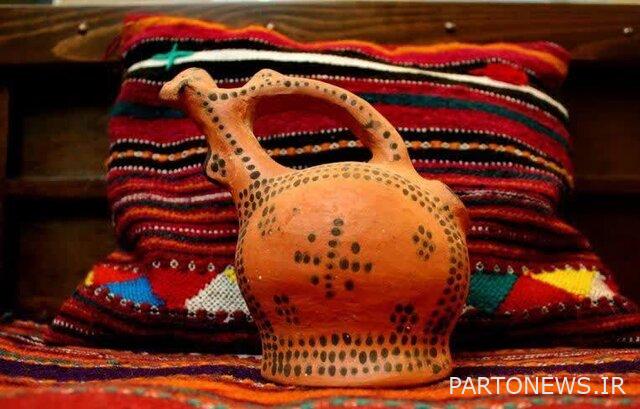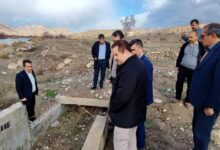Removing the dust of oblivion from seven-thousand-year-old art

“Nadim Arbab” is an entrepreneur from Saravan who, by using the art of his grandmother’s hand and trusting in his strength and effort, has seasoned the bitterness of his death with the sweet taste of prosperity and success.
According to Isna, pottery jars are not silent here, because this art has been passed down from generation to generation, and children and grandchildren, along with their mothers and grandmothers, have been familiar with this industry since childhood.
The life story of “Nadim” who learned the art of pottery from his grandmother “Maryam” is proof of this claim; The 87-year-old old woman of Fanuji, who did not stop working as long as she was alive and shaped and colored the pottery by turning her hands.
Pottery is one of the most important and oldest human arts that has flourished in Iran for a long time. Pottery has a prominent place in Iranian civilization, and in Baluchistan, its history goes back to the Paleolithic era and before history.
The pottery obtained from the site of the burnt city of Sistan located in the north of Sistan and Baluchistan and other ancient areas of the province dates back to thousands of years before Christ.
Kalpurgan is the only living pottery museum in the world
Kalpurgan village is located 25 km from Saravan city and 390 km southeast of Zahedan in Sistan and Baluchistan province and is known as the only living pottery museum in the world.
This village is introduced with pottery and the pottery method of its women, and the women and girls of this village learn pottery from their mothers, grandmothers and ancestors and create beautiful art from water and soil that fascinates every viewer.
Baloch women artists make Kalpurgan pottery with completely geometric designs and patterns without glaze and without any tools or pottery wheels, so that their productions are very similar to the works discovered from the historical and ancient sites of Baluchistan region and other parts of Iran.
The soil for the pottery of this village is usually supplied from the clay mine of Meshkotek, which in the past was transported to the workshop by special carts or carts. But now it is transported to the workshop by dump truck.
To separate the impurity from the soil, first it is sieved and then it is poured into a 2-story basin and water is added to it, and then the soil is mixed in the water until the soil particles are suspended in the water.
After the strainer and tube, they transfer to the second basin, which has a different level from the first one and is lower, and in order to prevent the impurities from entering the second basin from the first basin, they usually install a few nets inside the said pipe to separate the last particles that remain in the solution.
Then, the obtained slurry is kept in the second pond for 2 days until its water evaporates, and then the obtained mud is kneaded with some of the same soil as before until it is ready to work.
In the local term, the resulting mixture is called “hajak” and the color of this mixture is usually gray to light green, which turns orange after baking in the oven.
These steps are the responsibility of men; But the next steps, which require precision and delicacy, are done by hand by the women artists of Kalpurgan.
The pottery making techniques of this region are the same methods used several thousand years ago, and this very basic and simple method has made Kalpurgan pottery art unique in the world.
“Tituk stone” is also used to decorate and paint pottery. This stone is found in Tepe Achar area in Kohoran, Mehrestan city, and its color is usually brown or black.
All the motifs used on the Kalpurgan pottery are abstract and subjective, which have been passed down from generation to generation and taken from the beliefs of the people of the region, which are consistent with the prehistoric pottery motifs.
All pottery products are exposed to the sun for 10 days after being made to dry completely, and before they go to the kiln, they are painted with Titok paint so that the vessel is baked with the paint at the same time.

Trying to revive the art of pottery
A handicraft entrepreneur in the field of pottery stated that pottery is a hereditary art and I learned this art since I was a child from my grandmother, stating: Pottery is very enjoyable; Because art is created with soul and heart, which is born of taste.
In an interview with ISNA, Nadim Arbab added: Since my grandmother passed away, so that the dust of oblivion does not settle on this historical art, I have continued this work in Fanuj city. One of my goals is to teach this art to others.
He continued: We make vessels such as pitchers, glasses, bowls, bowls, plates, clay pots, ashtrays, kandags, chalim (hookah) from clay and send them to the market for sale.
Stating that the glazed pottery has a large number of customers in the local, provincial and foreign markets and even in the neighboring countries, this entrepreneur said: despite the great effort that goes into making it; But they are sold at very low prices.
He stated that the soil required for making pottery is obtained from the mountains three kilometers away from the village and first we sift it to make it uniform, he added: this soil is muddled in a pond so that it absorbs water when the mud itself When it gets hard, they pack it in nylons, the longer it stays in the nylon, the better. They use these packing gels in the amount they need until they need the gel again.
Arbab pointed out: The color used for painting on pottery is a mineral color that is made from a stone called “Tituk”.
He stated that the pottery sales market is favorable and in this regard we have benefited from the platform of virtual space for advertising and marketing, he said: Utilizing the capacities of virtual space has made the sales market of pottery artisans flourish in addition to the introduction of fine handicrafts.
This entrepreneur asked the authorities to support the artisans and said: the presence of artisans in the exhibitions will also lead to the prosperity of the sales market in addition to the introduction of handicraft works.
Launching a trilingual site to introduce and sell “Kalpurgan” products.
The General Director of Cultural Heritage, Tourism and Handicrafts of Sistan and Baluchistan added: In 2002, the “Kalpurgan” Pottery Museum was registered in the list of national monuments of the country, and after the registration of “Kalpurgan” pottery in the list of intangible heritage of the country, in order to support potters and introduce The historical identity of the region was proposed by the Cultural Heritage, Tourism and Handicrafts Organization in July 2016 as the Global Pottery Village.
Alireza Jalalzaei said: In 2016, the World Handicrafts Council registered “Kalpurgan” as the world’s first handicraft village due to its seven thousand-year-old pottery.
He continued: With the globalization of Kalpurgan pottery, we have witnessed the presence of domestic and foreign tourists to this village, which has led to the development of tourism and development in the economic and social spheres of this region.
Director General of Cultural Heritage, Tourism and Handicrafts of Sistan and Baluchistan said: Pottery in Kalpurgan village is rooted in the history and civilization of the people of this region.
He said: In the village of “Kalpurgan” and Saravan, places have been set up to sell pottery, and in addition, a site in Persian, English and Arabic languages has also been installed so that people from all over the world can visit and buy Kalpurgan products.
Jalalzaei stated: We have tried to cut off the hand of dealers from this industry by launching this site.

